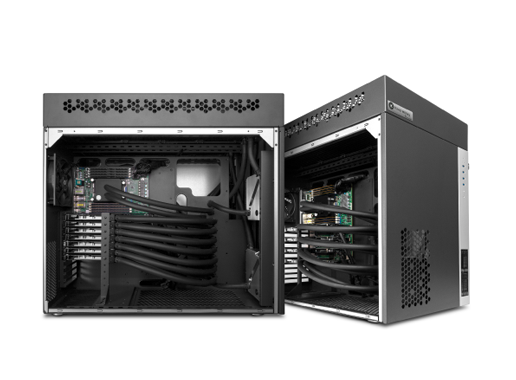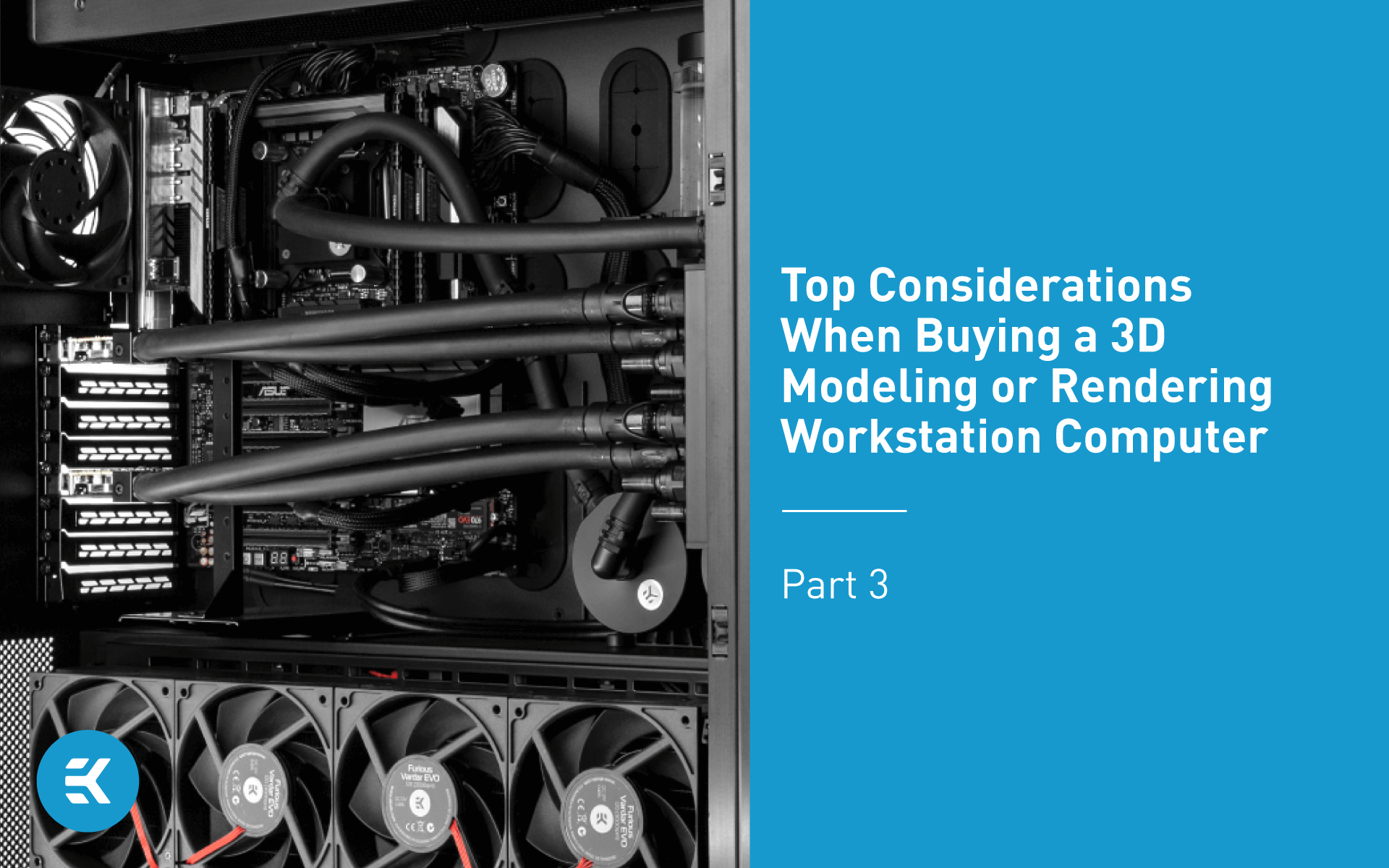
Top Considerations When Buying a 3D Modeling or Rendering Workstation Computer – Part 3
2/6/2023 8:41 AM
In this concluding episode of our journey towards being a pro-consumer, learn the final considerations to take before pulling the trigger on a new workstation. Your workstation is the ultimate investment for your performance and efforts, so be sure that it delivers everything you need to successfully create 3D models and render without any of the drawbacks.
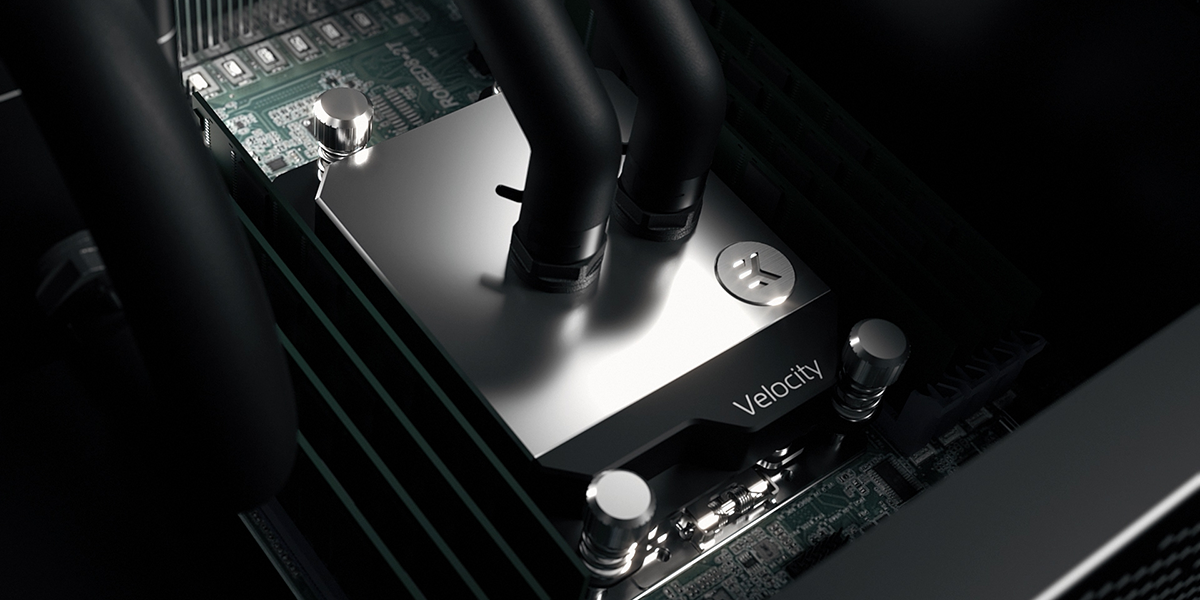
What kind of hardware do you require to render?
Depending on what and how you render, your hardware requirements can vary. There is a pretty big disparity between the hardware requirements of actual 3D modeling work inside the viewport and the requirements to render it into something usable afterward. If you’d like a more in-depth understanding of the disparity, we cover them in the first and second blogs of this series.
Once you know your hardware requirements, there are a few distinct paths you can take:
- Strike a good balance between viewport active work and rendering performance, but neither will be optimized.
- Prioritize the best active work performance and offload the rendering to a dedicated render farm.
- Assemble a powerhouse that can do it all, if that is within your budget.
Do you need to render and do viewpoint active work?
If yes, it’s possible to get the best of both worlds. A lighter, well-balanced workstation can help you get off the ground by delivering acceptable viewpoint active work and rendering performance. Here is what that workstation should look like.
Your workstation needs a decent 6 to 8 core CPU with a type of “Hyperthreading” technology that effectively doubles the number of threads available per CPU core. AMD Ryzen R5 5600X, Intel Core i5-11600K or 12600K are solid options that will get you quite far. All of them have excellent single core speeds and aren’t lacking cores, but they don’t lead the pack. An appropriate motherboard can be found in the $150-200 range. However, make sure that it has all the necessary connectivity you might need. Taking the current GPU market into consideration, a more modest GPU will get you across the finish line, so no need to splurge there.
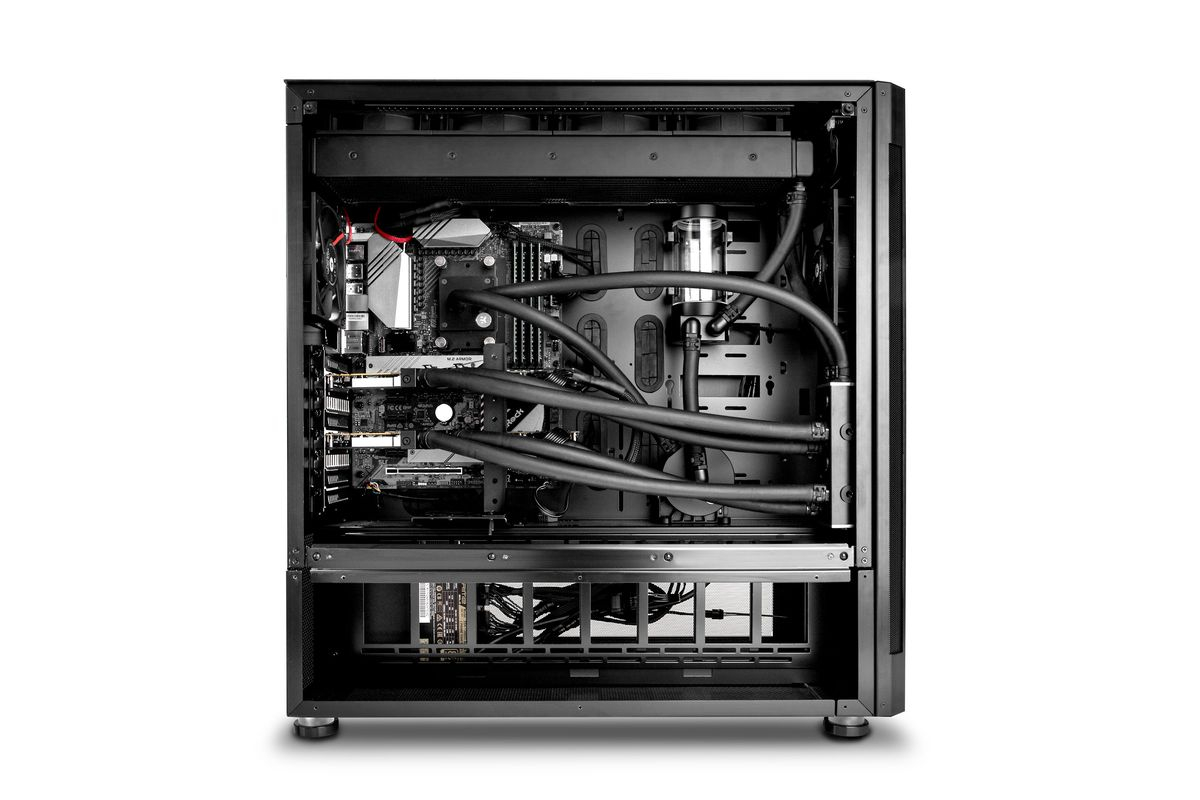
For RAM, it’s best to look at a minimum of 32GB DDR4, 3200MHz. Storage can be handled by a mix of NVMe and SATA SSDs and one higher capacity hard drive for long-term storage of projects. Lastly, there are several options for recommended cases and PSUs.
How can a fully-loaded workstation benefit your work, and what’s included?
There’s no end to how an optimized workstation can positively impact your work. You now have a powerful machine that can do it all, from perfectly fluid animations and processing in the viewport to blazingly quick rendering. And you’re not the only one whose life will improve. Your clients will notice the difference as projects are delivered faster.
To understand the result, it’s important to know the hardware that drives it. The bedrock of such a workstation is a fully-loaded motherboard. Normally, these motherboards support higher numbers of PCIe lanes, have better components, and offer firmware to adequately support the many GPUs and top-shelf CPUs. Here the options are mostly HEDT (high-end desktop) platforms from both Intel and AMD, with core count starting around 16 and going up to 64. Some CPU models also offer 128 threads. Thanks to advanced boost algorithms which make the single-core speed on point and the CUDA acceleration from an RTX 3090 or two, that viewport will be as smooth as butter. Two or more GPUs will help you finish those frames in record time to make rendering the finished project an easy affair. And lets not forget about RAM. Upgrading to 64GB or more, will allow various software to really stretch its legs.
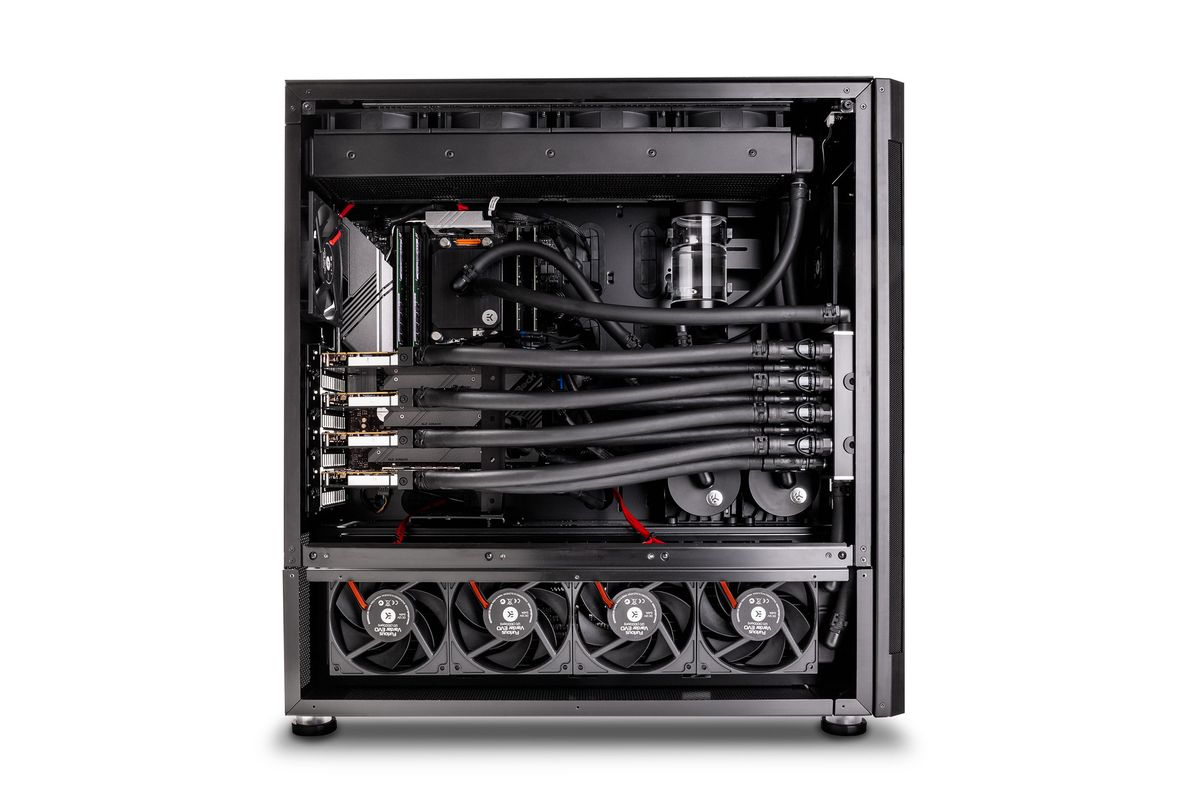
It requires a lot to complete these impressive computational feats, so your workstation will need adequate power and cooling. Air won’t be able to cut it properly, so go with the “flow” and upgrade to a liquid-cooled option to reliably cool your powerful workstation. An ideal candidate can be found in the Fluid Works Studio Series S5000 line which ticks all the boxes for a smooth and flawless workflow. It offers configurable options, so that you can really dial in the hardware requirements.
Is it possible to render and create active models simultaneously?
Generally, you can’t continue actively working while your computer finishes rendering. As a result, you can face lost productivity and time. Luckily, there’s a solution! You can divide and conquer by having a dedicated active modeling workstation and a dedicated render node.
Once the work is divided, your workflow will see enormous benefits. You can work on multiple projects at the same time to increase your productivity exponentially if the render times stretch into hours or days even. While renting render farm capacity can seem like a worthwhile option, you will quickly realize that having your very own render node or farm even can actually be quite beneficial to your bottom line.
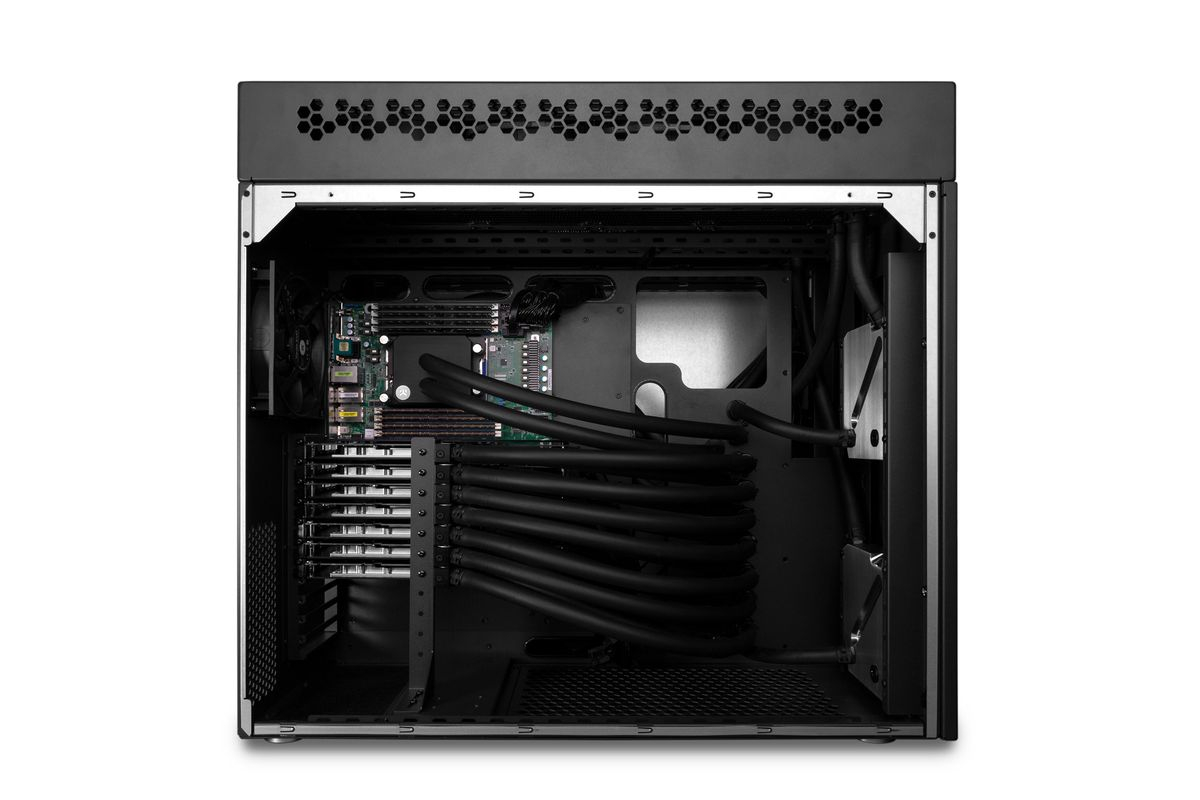
The active work computer can be any of the previously discussed configurations. For the render node, you may want to have a quality high speed connection to quickly upload your work for further processing. It pays to look ahead and have the ability to upgrade the render node as your work expands. The EK Fluid Works Compute Series presents an excellent option as they can fit many GPUs in densities that are usually seen in servers. In addition, all the workstations are fully liquid-cooled, ensuring cool and uninterrupted operation no matter how intensive the render task.
Do you have time to research and build a workstation?
It can be quite challenging and time-consuming to first decide what you need, obtain all the components, and then put them together. This isn’t feasible for many professionals in demanding jobs, so there is an easier way. System Integrators! They perform the arduous task of getting all the components, assembling them, and then verifying that everything runs smoothly. While they do take a small piece of the pie, they offer an excellent return on investment.
EK Fluid works is uniquely positioned here, where we not only offer top-shelf components, but also the renowned EK Liquid Cooling solution along with them. All of the systems are thoroughly tested, verified, and have redundant systems for effortless operation. Not to mention that our experts are always available to lend a hand if you need additional assistance.
Time to select your workstation
Throughout this series, we have laid out all of the considerations, tips, and insights needed to guide you to your perfect workstation. Now that you are a full-fledged prosumer, you can identify the workstation that will be meet your needs and support your work as you render and create 3D models. Explore our configurable Studio and Compute line to discover the liquid-cooled workstation to take your workflow to the next level!







